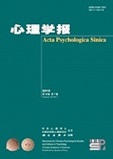Social perception research focused on categorization and identity, but most previous studies merely examined the intergroup relations among the perceptually evident and categorically typical groups. The intergroup attitude of the multiethnic individuals is still unclear, including their identity choices and implicit theories. Hence, this study aims to explore these issues with the offspring of interethnic unions in China. Research on mixed race showed that biracial people can flexibly switch between their racial identities, demonstrating that multiracial individuals who grew up in multicultural backgrounds were less likely to hold essentialist views of race. We therefore hypothesize that offspring of Chinese interethnic marriages would have similar implicit theories of ethnicity. Moreover, such offspring would have a less strong identification with their ethnicity and more positive attitudes toward outgroup members compared with their peers of endogamous marriages.
A total of 3481 students (ages: 14.38 ± 1.03y) were selected as research participants, among these, the numbers of offspring of exogamous marriage were 1317, and the offspring of endogamous marriage were 2164. The distribution areas of the participants spreading all over the 5 province, and the ethnic types of participants including Han and 14 Chinese minorities (Mongol, Oroqen, Lahu, Dai, Wa, Blang, Maio, Bai, Yao, Dong, Zhuang, Maonan, Tibetan, Daur). The implicit theories, ethnic identity, outgroup attitude, and superordinate identity were measured by using questionnaire method. Descriptive statistics and correlation were analyzed with SPSS 25.0 and the conditional process analysis was using PROCESS 3.3 macro (in SPSS). Based on the hypotheses of Social Identity Theory, the serial mediating role of essentialism and ethnic identity between interethnic marriage types of parents (1: intermarriage, 0: intramarriage) and outgroup attitude of offsprings was investigated. Then, the mediating effect of superordinate identity between parental marriage types and offsprings’ intergroup attitudes was examined based on Common Ingroup Identity Model. Finally, we examine whether the intermarriage is a good indicator of intergroup relation.
Results show that offspring of intermarriages (vs. offsprings of intramarriage) are less likely to hold ethnic essentialist beliefs and have a lower sense of their ethnic identity. However, they are reported to have more positive attitudes toward outgroups and higher interest in intergroup contact and are more likely to develop a superordinate level of identity (Chinese nation identity). For the offspring of intermarriages who have successfully built the Chinese Nation identity, the sense of community for the Chinese national identity mediates the impact of parents’ intermarriage on their intergroup attitudes. On the contrary, for those who still hold a subordinate group identity, the ethnic implicit theories (essentialism or social constructionism) and subgroup identity play the chain mediation effect of interethnic marriages on improvement in outgroup perceptions. Additionally, the offspring of intermarriages and intramarriages have more positive interethnic attitudes in ethnicity with higher interethnic marriage rates than with lower interethnic marriage rates.
These results demonstrate that the interethnic marriage of parents plays a key role in shaping their children’s ethnic essentialist beliefs and subgroup identity. Moreover, the present finding supports the Common Ingroup Identity Model. The reason is that the offspring of intermarriages are likely to develop a superordinate level of identity, indicating that those multiethnic groups are more flexible in self-identity categorization. In addition, we found that the model of social cognitive theory is unsuitable to the actual ethnic relations in China. That is, the ethnic identity was positive with intergroup attitudes, suggesting that different ethnic groups have unity and harmonious intergroup relations. Finally, we found that social situational factors have an important influence on ethnic essentialist beliefs and intergroup attitudes. Ethnic groups with high levels of inter-ethnic intermarriage can hold relatively high ethnic identities and positive intergroup attitudes, vividly reflecting the pattern of diversity in the unity of the Chinese nation.




